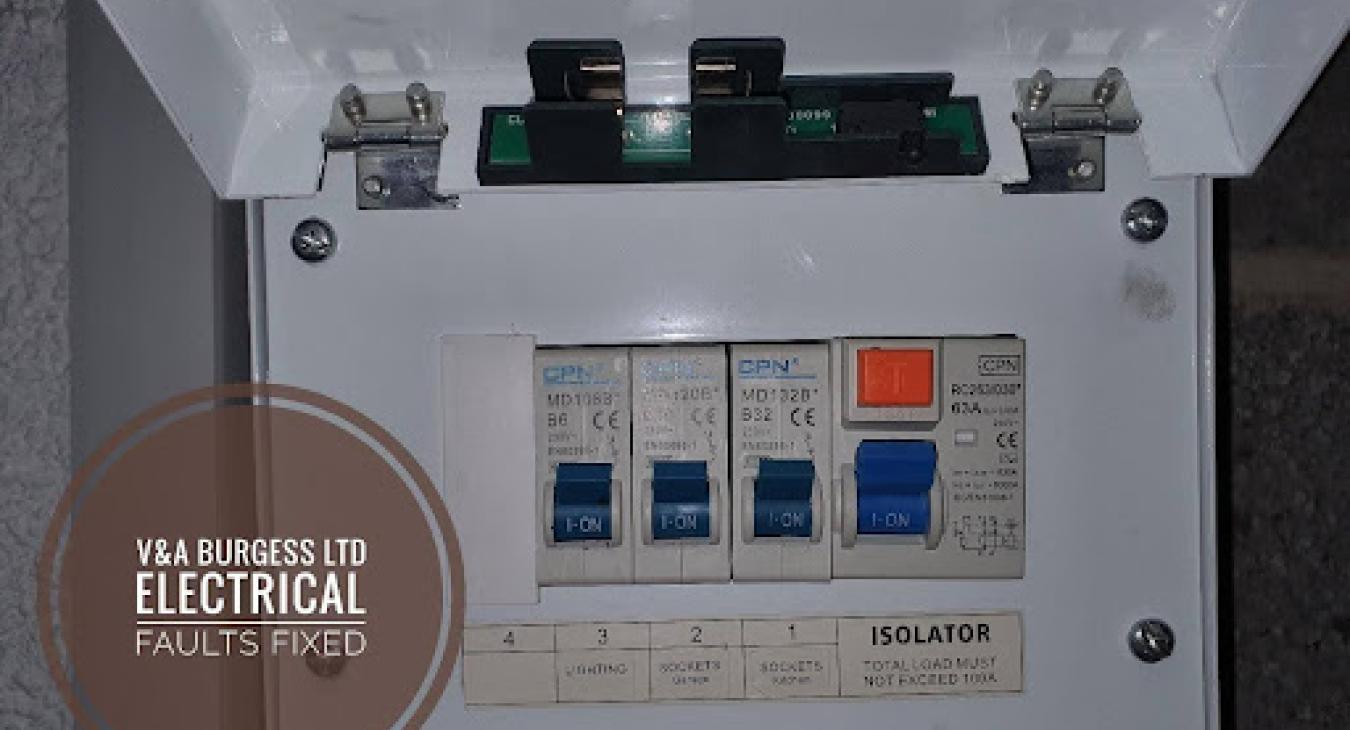
1) What is an electric panel?
An ELECTRIC PANEL is the brains of any electrical system. The panel receives the mains incoming electrical supply and divides this into smaller supplies to send electricity around the building. This is achieved through the use of various switches and other component parts inside the panel. The supply is divided into circuits and controlled through a variety of switches in the panel. The supply is fed along a copper bar that runs underneath the circuit breakers from the Main Switch or RCD devices. This copper bar is very thick and must be correctly torqued into each switch to prevent overheating and loose connections. The photograph shows a small electric panel that is typical of that installed in garages, small home office buildings and other outbuildings.
Back to top2) What do the switches do?🤔
There are a variety of switches inside an electrical panel. There is the Mains Switch or isolator which controls the electrical supply to the panel. When this switch is turned off, the power to the panel and its other circuit breakers is generally removed although there can still be live parts inside the electrical panel. There are the Circuit Breakers or trip switches which protect the circuits and cables from overload such as too many appliances being used. They also protect the cables and circuits from short circuits and the damage that these can cause. A short circuit is when there is an electrical fault resulting in a very large electrical current flowing in the circuit. Without the circuit breaker there would likely be a fire or explosion if the circuit did not disconnect. Then there are the RCD devices in the panel...
Back to top3) What is an RCD?
An RCD is short for Residual Current Device. This device detects any traces of electrical current missing from electrical circuits and turns off when this happens. This is the electric shock protection device found in an electrical panel. If your panel does not have an RCD then it is likely very old. Most electrical panels should have at least on RCD device inside them these days. It is one of the best forms of electric shock protection in and electrical installation.
Back to top4) Is a plastic electric panel illegal?⚠️
Just because an ELECTRIC PANEL is plastic does not mean that it is illegal. Many panels are still plastic in the UK. New panels are made from non-combustible material which is usually metal. If a new panel is installed in your property, it should be a non-combustible to comply with modern wiring regulations.
Back to top5) How long does an electric panel last?
An electric panel should last many years if regularly serviced by an electrician. The panel may need updating throughout its life to ensure continued compliance with safety wiring regulations and ever-changing electrical installation demands. These panels can sometimes just have their components replaced for more modern alternatives but in some cases, the panel may need to be replaced if parts are obsolete.
Back to top6) What does a new panel cost?💷
If parts are required to be upgraded and the original panel can remain then the cost will be less than that of a replacement panel. Where RCD devices may require replacing then the costs will generally be between £200 and £280 including any electrical certification needed to prove the works have been done safely. If an entirely new panel is needed then the full electrical installation must also be tested at the same time which not only adds to the cost but can mean that hidden defects are highlighted. These defects must be rectified before the new panel can be installed. The nature of the defects found will affect the costs. A new panel, assuming no defects are found will generally cost between £750 and £1200 including supply, testing and certification. The larger the property and ELECTRIC PANEL, the greater the costs will be for replacement.
📞 01925 595 980 (Warrington)
📞 0151 351 4011 (Liverpool)
📧 Enquire online
💻 Visit our website
Back to top










